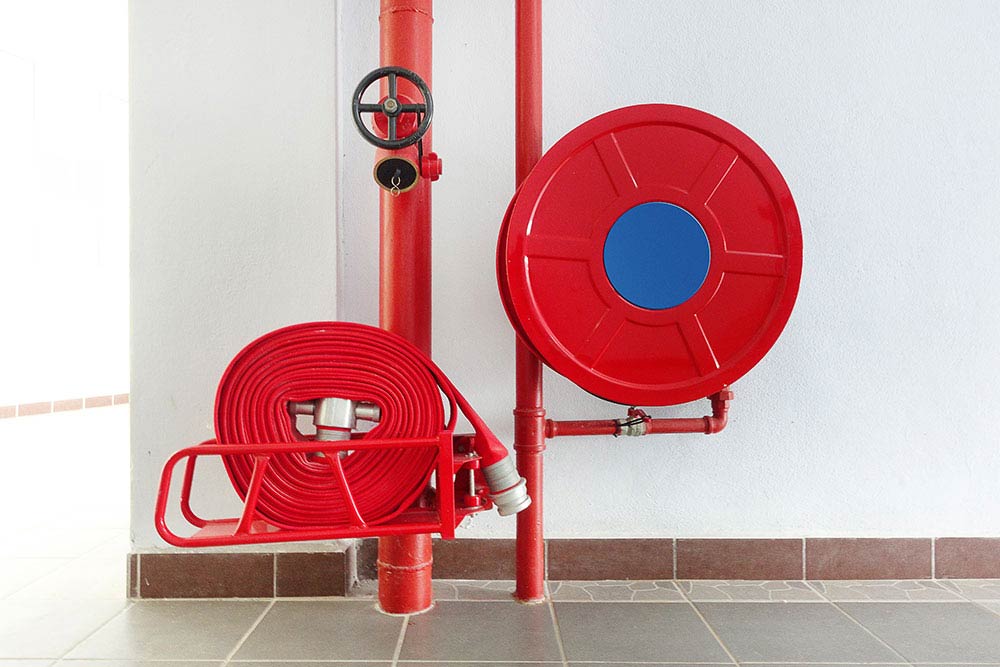
Oh no, a tenant accidentally started a fire in their kitchen while using the toaster. Luckily, the tenant could grab the fire extinguisher you provided and put out the fire before anything seriously bad could happen. Sorted. No drama. And why? Because you understood fire safety regulations.
This scenario is pretty common. Unfortunately, some 33,180 dwelling fires still happened in the latest data available. Yikes. I doubt you want your building to join that statistic. So, let’s discuss how to prevent it.
Fire Safety Regulations Basics
So that you don’t fall asleep while reading this, we will look at the changes to the regulations that you should be aware of and present them simply. But, this blog is not exhaustive, so make sure you do your own homework and visit the UK government website as well.
We’ll be focussing on residential buildings, as that’s what the changes to the regulation affect.
What Regulations?
The top dog in terms of Fire Safety Regulations, is the Regulatory Reform (Fire Safety) Order 2005 (FSO). It covers most non-domestic premises. We won’t go into depth about it here, but you can check out this blog to learn more.
The Fire Safety Act 2021 was recently introduced and contains requirements for multi-occupied residential buildings and other domestic premises.
The changes we’ve mentioned were to the Fire Safety (England) Regulations 2022, brought in for building owners.
Fire Safety Duties
You might be thinking, ‘Okay, that all sounds very serious. What am I supposed to do?’
Fire Safety Duties cover all residential premises so each must have a ‘Responsible Person’. And yes, that includes yours. This is someone, either yourself or a qualified person that you designate, who makes sure fire prevention measures are present on the premises.
The ‘Responsible Person’ needs to arrange for:
-
- A fire risk assessment
- Reducing or removing fire risks
- Firefighting equipment (like fire extinguishers)
- Fire safety signs
- Fire alarm systems
- Emergency lighting
- An emergency plan
- Fire safety training (for staff)

Fire Safety (England) Regulations 2022
I know, MORE regulations. Unfortunately, they’re needed. The UK government introduced them under the previously mentioned FSO, after recommendations were made to change the law.
They apply to ‘high-rise’ residential buildings, that is, buildings that are at least 18 meters or seven storeys high.
What’s New?
In ‘high-rise’ multi-occupied residential buildings, responsible persons must provide:
- Residents with fire safety instructions and information about how important fire doors are
- The following to their local Fire and Rescue service:
- Information about the design and materials of the building’s external wall system, including the level of risk they present
- Up-to-date electronic building floor plans
- The following within the building:
- An information box that contains a single page building plan showing where key firefighting equipment is
- An information box that contains information about the ‘Responsible Person’ and hard copies of building floor plans
- Wayfinding signage that identifies flat and floor numbers
And, if your building is over 11 meters high, responsible persons must:
- Undertake yearly checks of flat entrance doors
- Checks of all fire doors in common parts every quarter
You can use this handy checklist if you’re undertaking fire door inspections yourself.
You’ll find a lot more detailed information about the regulations on the government website.
Consequences of Non-Compliance
The ultimate consequence for not complying with Fire Safety Regulations is loss of life. I’m sure this is something you’d want to avoid at all cost.

You could also face property damage, penalties and litigation. You could receive three different levels of notice if there is an unacceptable level of fire risk in your premises:
- Alterations notices
- Enforcement notices
- Prohibition notices
We won’t go into these in detail, but just know that if you fail to comply with notices, it’s a criminal offence. You can face fines up to an unlimited amount or jail time.
Fire Awareness Training
A fire can happen at any time and for so many different reasons. Residential buildings are a particular fire risk, as they contain numerous people who you’re relying on not to accidentally start a fire.
Arm yourself with knowledge. Take some fire awareness training courses. You can never be too careful. If you learn all you can about fire, you’ll stand a better chance of avoiding the consequences it could bring to your building.
































































































































































































































































































































































































































































































































































































































































































































































